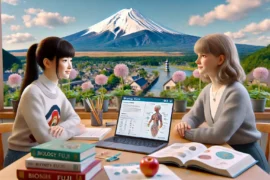Science Quiz for Class 7 |
Exploring Science: Understanding the Basics and Beyond
Introduction
Science is a fascinating subject that opens up a world of knowledge and discovery. From understanding the basic building blocks of life to exploring the vastness of space, science provides answers to many of the mysteries of our world. This article will delve into key scientific concepts and principles covered in the quiz, providing detailed explanations and practical examples to help you deepen your understanding and apply these principles effectively.
The Building Blocks of Matter
At the core of chemistry lies the study of matter and its composition. Matter is anything that has mass and occupies space. The simplest form of matter is an element, which consists of atoms. These atoms combine to form molecules, which in turn make up the substances we see around us.
Example
Water, with its chemical formula H2O, is a perfect example of how atoms combine to form molecules. Two hydrogen atoms bond with one oxygen atom to create water, a substance essential for life.
The Mysteries of Space
Space exploration has always fascinated humanity. The Red Planet, Mars, is particularly interesting due to its similarities with Earth and its potential to support life. Mars is called the Red Planet because of its reddish appearance, caused by iron oxide on its surface.
Example
The color of Mars can be observed even with the naked eye from Earth, making it a visible part of our night sky.
Photosynthesis: Nature’s Power Plant
Photosynthesis is the process by which plants convert sunlight into energy. This process not only sustains the plant but also produces oxygen, which is essential for life on Earth. The process occurs in the chloroplasts within plant cells, where sunlight, carbon dioxide, and water are converted into glucose and oxygen.
Example
Think of a leaf as a solar panel. Just as solar panels convert sunlight into electricity, leaves use sunlight to produce energy in the form of glucose, which fuels the plant’s growth.
Earth’s Atmosphere: The Protective Blanket
The Earth’s atmosphere is a layer of gases that surrounds the planet, protecting it from the sun’s harmful rays and keeping the planet warm enough to support life. Nitrogen makes up the majority of the Earth’s atmosphere, followed by oxygen, which is vital for respiration in animals and humans.
Example
Imagine the atmosphere as a warm blanket that keeps the Earth at a stable temperature, allowing life to thrive.
Gravity: The Force That Binds Us
Gravity is a fundamental force that attracts objects towards one another. It keeps planets in orbit around the Sun and governs the motion of everything from falling apples to ocean tides.
Example
Without gravity, we would not be able to walk on the ground, and the planets would drift away into space.
Renewable Energy: Powering the Future
Renewable energy sources like solar and wind power are essential for a sustainable future. Unlike fossil fuels, which are finite and polluting, renewable energy is constantly replenished by natural processes and has a minimal environmental impact.
Example
Solar panels are increasingly common on rooftops, where they convert sunlight directly into electricity, reducing our dependence on fossil fuels.
Conclusion
Science is an ever-evolving field that constantly reveals new insights about our world and beyond. By understanding the basic principles covered in this quiz, students can build a strong foundation for further study and exploration. Whether it’s the chemistry of water, the physics of gravity, or the biology of photosynthesis, each concept plays a crucial role in shaping our understanding of the universe. Keep exploring, stay curious, and continue your journey in the fascinating world of science.








Comments are closed.